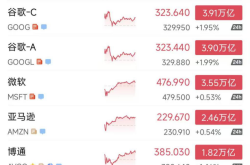Instant Retail in 2025: Taobao's Ecosystem Makes a Comeback, Meituan's Ironclad Defense, and JD's Quality-Driven Breakthrough
![]() 11/27 2025
11/27 2025
![]() 513
513

As 2025 draws to a close, looking back on this year, the instant retail market has witnessed an unprecedented 'three-way rivalry.'
Early in the year, a sudden subsidy war kicked off the competition in instant retail. On the surface, it was a direct clash among Taobao, Meituan, and JD over order volume, user engagement time, and market share. However, the competition quickly transcended simple price wars.
Behind the subsidies lies a struggle for control over future consumer entry points, an exploration of how to deeply integrate the two trillion-dollar markets of 'local life' and 'e-commerce,' and a comprehensive test of platform ecosystem capabilities.
Taobao attempts to deeply integrate e-commerce with local life services to build a large consumer platform; Meituan delves deeper into food delivery and expands its service boundaries to include more categories such as fresh produce, supermarkets, and pharmaceuticals; JD seeks to prove its irreplaceable advantage in the high-end, high-average-order-value instant retail sector.
After this sudden and fierce start to the competition, some hesitated, some were trapped, and some broke through.
JD: Quality-Driven Breakthrough, Striving for Survival Under Pressure
In early 2025, JD entered the instant retail battlefield with 'quality food delivery' as its weapon, completely changing the original competitive landscape.
JD's entry strategy was precise and formidable, with three key moves for quality food delivery directly addressing industry pain points: First, it attracted high-quality merchants through a quality dine-in merchant recruitment plan and low commission commitments; second, it set a new industry standard by being the first to provide social insurance and housing funds for full-time riders; third, it launched a billion-dollar subsidy program to quickly win user support.
This combination of moves avoided direct head-to-head competition with Meituan in terms of order frequency and scale, elevating the competition to the levels of quality assurance, social responsibility, and user experience. It aimed to establish in consumers' minds the perception that JD food delivery equals quality food delivery.
From order data, JD's strategy was not just theoretical; order volumes and the number of participating merchants continued to grow, confirming its initial success.
Since launching its food delivery business on February 11, JD has seen explosive growth in orders: 1 million orders on March 24, 5 million on April 15, 10 million on April 22, and 20 million on May 14. By June 1, just 90 days after launch, JD's daily food delivery orders had surpassed 25 million.
JD Group disclosed that as of March this year, over 2 million merchants had joined JD food delivery, with over 150,000 full-time riders. Additionally, the seven-day repeat purchase rate for Qixian Kitchen, which opened in July this year, was three times the industry average, driving a more than 12% increase in orders for high-quality restaurants within a 3-kilometer radius.
Despite its rapid start, JD's quality-driven approach still faces severe sustainability challenges.
First, ongoing commitments to low profit margins and billion-dollar subsidies put pressure on financial performance; second, providing social insurance and housing funds for full-time riders, while enhancing social reputation, significantly increases operational costs; furthermore, whether the positioning of quality food delivery can attract a broader range of price-sensitive users will determine its market ceiling.
JD Group's third-quarter financial report showed that the 'new business' segment, including food delivery, achieved revenue of 15.592 billion yuan, a 12.56% increase from the previous quarter. However, operating losses expanded to 15.736 billion yuan, compared to 14.777 billion yuan in the previous quarter. Additionally, marketing expenses surged by 110.5% year-on-year, from 10 billion yuan in the same period last year to 21.1 billion yuan, primarily due to new business promotion.
JD's quality-driven strategy has injected new variables into the instant retail market. However, its long-term competitiveness depends on whether it can find a balance between scale and profitability while maintaining its quality focus. The distance this quality-driven path can go will determine JD's final position in the 'three-way rivalry' of instant retail.
Meituan Flash Sale: Defending and Counterattacking, Consolidating and Innovating
As the 'original inhabitant' of China's instant retail market, Meituan had established a near-monopoly local life moat through a decade of deep cultivation. However, with JD's high-profile entry into food delivery with billion-dollar subsidies, attacking Meituan's core territory, the once blue ocean market has overnight become a red ocean battleground for giants.
In this battle for dominance over local life in the next decade, Meituan is no longer the confident pioneer but has become a defender under full attack. In the first quarter of 2025, core local commerce revenue reached 64.32 billion yuan, a 17.8% year-on-year increase, but slightly lower than the 27.4% growth in the same period in 2024.
On April 15, Meituan officially launched its instant retail brand 'Meituan Flash Sale,' positioning it as a next-generation shopping platform that accompanies consumers 24/7, and placed it as a primary entry point on the app's homepage. Clearly, facing internal and external pressures, Meituan has initiated a comprehensive defense and counterattack, primarily reinforcing its moat from three dimensions: users, merchants, and riders.
On the user side, Meituan has successfully extended the user trust built in food delivery to full-category instant retail, leveraging its years of accumulated local life service mindshare. Battle reports from Meituan Food Delivery and Meituan Flash Sale show that as of July 5, Meituan's instant retail daily orders had surpassed 120 million, with food delivery orders exceeding 100 million and non-food delivery orders surpassing 20 million.
This means users have started to habitually buy medicines, phones, and flowers on Meituan, not just for meals. This natural extension of consumption scenarios represents a deep moat that JD's subsidies find difficult to penetrate.
On the supply side, Meituan is helping offline retailers achieve transformation and upgrading through digital empowerment. From product selection and pricing to inventory management and delivery optimization, Meituan provides full-link solutions for its partners, forming another important competitive advantage through these deep bindings.
In the instant retail battlefield, algorithms determine efficiency, but riders determine the limit.
It is understood that by 2025, the total number of food delivery riders nationwide will exceed 10 million, with Meituan riders reaching 7.45 million, accounting for over 70% and growing at nearly 20% annually. This scale is not just a reserve of delivery capacity but also a guarantee of fulfillment certainty. While Taobao Flash Sale is still reusing Ele.me's old system and JD Instant is limited by its self-operated logistics coverage radius, Meituan has built an elastic delivery network capable of '30-minute reach.'
Undoubtedly, Meituan is placing high importance and investment in instant retail. This defensive battle is one Meituan must win because what's at stake is not just market share but also the defining power over the 'local life entry point' in the next decade.
Taobao Flash Sale: Ecosystem Synergy, Seeking Breakthroughs
While JD made a high-profile entry into food delivery, sparking a new round of billion-dollar subsidy wars with Meituan, Alibaba chose a path of avoiding direct confrontation and flanking the enemy.
On April 30, Taobao quietly upgraded 'Hourly Delivery' to 'Taobao Flash Sale' and granted it a primary entry point on the homepage. More critically, on November 3, Ele.me officially rebranded as 'Taobao Flash Sale,' marking the full integration of this veteran food delivery platform into Taobao's instant retail ecosystem.
During this period, with the coverage of 50 billion yuan in subsidies and an infusion of Alibaba ecosystem traffic, Taobao's instant retail business quickly showed results.
In the third quarter of this year, Alibaba's instant retail business (including revenue generated through Taobao Flash Sale and the Ele.me app) reached 22.906 billion yuan, a 60% year-on-year increase. This growth was precisely due to the order volume increase brought by Taobao Flash Sale, launched at the end of April.
From a longer-term perspective, for the six months ending September 30, 2025, instant retail business revenue reached 37.69 billion yuan, a 37% year-on-year increase. This rapid growth came with a cost; during these six months, Alibaba's selling and marketing expenses reached 119.674 billion yuan, an 83.64% year-on-year increase, accounting for 24.2% of revenue.
The rapid rise of Taobao Flash Sale is rooted more deeply in Alibaba's unique ecosystem synergy capabilities.
Tmall Supermarket provides a standard product supply chain, brand flagship stores ensure authenticity and price competitiveness, Hema covers fresh produce needs, Ele.me contributes nationwide rider delivery capacity, and Alipay provides financial support. Leveraging the synergy of the Alibaba ecosystem, Taobao Flash Sale has turned the concept of 'everything deliverable' into reality, naturally extending high-frequency food delivery needs to full-category instant consumption, significantly enhancing user value.
More critically, the 'Alibaba Super Membership' system launched in August integrates scenarios across Taobao, Tmall, Fliggy, Ele.me, and more, allowing users to enjoy cross-business benefits with a single payment, creating an integrated 'food, entertainment, clothing, housing, and travel' experience. This represents a core moat that Meituan, lacking e-commerce genes, and JD, lacking local life touchpoints, cannot replicate in the short term.
It should be noted that as Taobao Flash Sale's order volume grows rapidly, resource synergy issues are becoming increasingly prominent.
First, while reusing Ele.me's delivery network, rider training, sorting processes, and after-sales standards still follow traditional food delivery logic, resulting in a fulfillment experience gap compared to Meituan. Second, although Alibaba believes 'users will not be confused by the name change,' market feedback shows that many users still habitually use 'Ele.me,' and 'Taobao Flash Sale' as a new brand still needs to improve mindshare penetration outside the Taobao ecosystem.
Simply put, through massive subsidy investments, Taobao Flash Sale has successfully captured market share in the first stage. As the battle enters a new phase, the true test lies in how to solidify its existing territory through effective operational governance. For Taobao Flash Sale, the next challenge is no longer about sustained investment but about building an efficient, stable, and scalable governance system that maintains user stickiness and business health after subsidies recede.
The 'three-way rivalry' in instant retail is entering a new phase that tests internal capabilities, and Taobao Flash Sale's path to breakthrough remains arduous.
2026: Who Will Dominate?
The fierce competition among Taobao, Meituan, and JD over dimensions such as food delivery subsidies, rider protection, fulfillment efficiency, and product supply has completely reshaped the industry landscape and development path.
Taobao Flash Sale leverages the synergy of the Alibaba ecosystem, JD Home establishes differentiated barriers through quality assurance, and Meituan Flash Sale relies on its scale effect and fulfillment network, with all three continuously deepening their respective moats. However, the current battle is far from settled, and the market remains in dynamic evolution.
Looking ahead to 2026, with sustain (continued) user demand upgrades and accelerated technological iterations, the competition for the future retail landscape will become even fiercer. The deciding factors may no longer be limited to order scale or subsidy intensity but will shift to a comprehensive contest of ecosystem synergy capabilities, refined operational efficiency, and sustainable development models.






